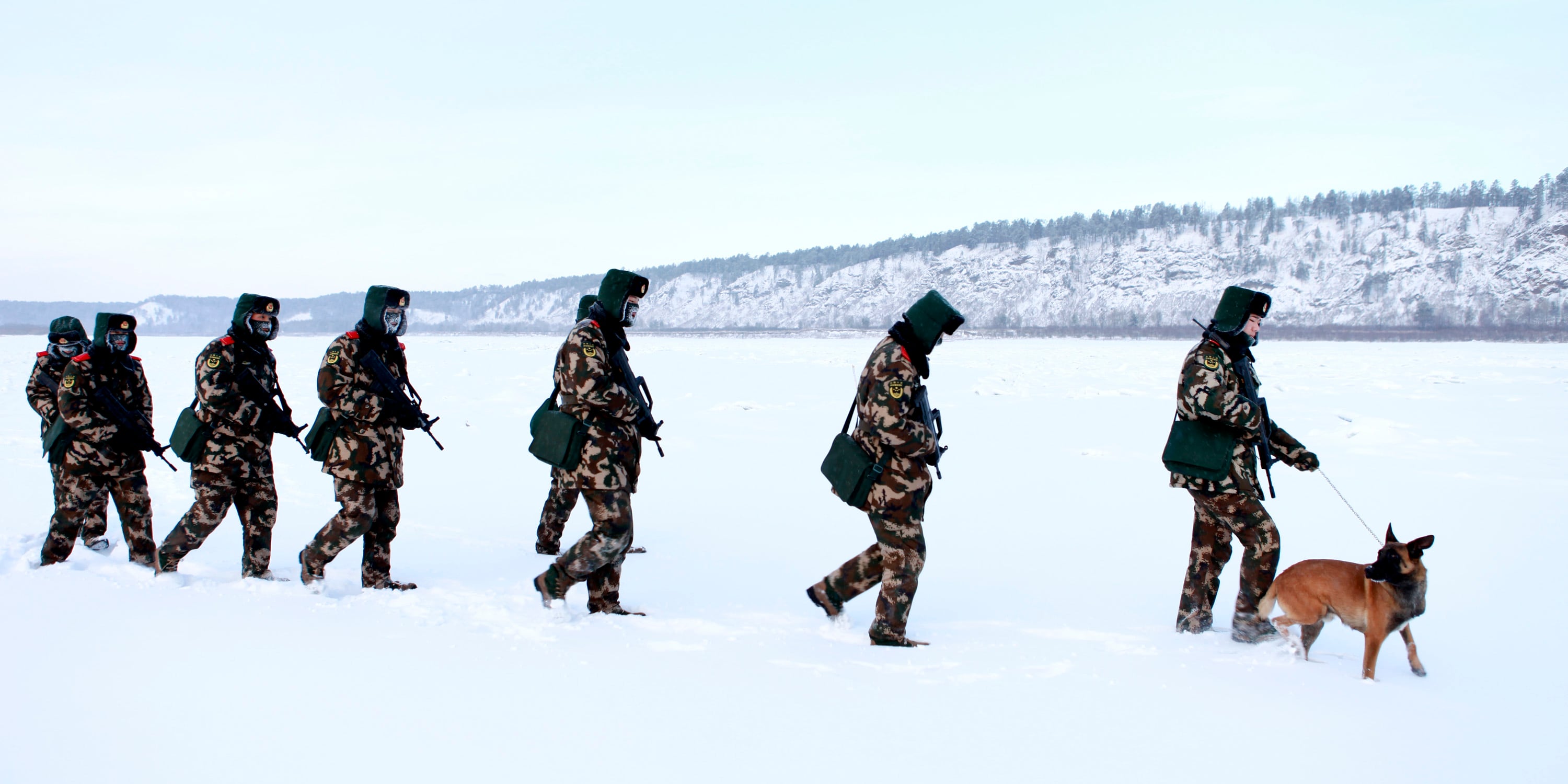For thousands of years, the magnetic allure of the North Pole has drawn explorers, pulled along on everything from dogsleds to dirigibles in search of adventure, riches, passage between Europe and Asia, and geopolitical advantage. Today, that dream of a transpolar connection is finally in reach as the ice retreats — and it’s spawning a new “great game” between nations over Arctic preeminence.
There’s just one problem: Climate change means this is ultimately a geopolitical contest no one is going to win, regardless of any investment in military materiel.
It’s easy to see why strategists and nation-states are so enamored when it comes to the showdown in the High North. This is a clean-sheet, geostrategic landscape — a place that went from a focus on scientific cooperation to a contest between autocracy and democracy in a decade.
This is not to say the Arctic Circle was empty before it started to heat up: There are indigenous communities with thousands of years of history in the region, and countries such as Norway and Russia with long Arctic coastlines that are relatively more inhabitable and navigable. It was also a theater in the Cold War for Soviet and American nuclear forces.
Today, however, proximity is not just for long-range weapons. Access, borders and resources — including the critical minerals that will fuel the 21st century “clean” energy transition — are coveted and need defending, really for the first time in human history.
And the nations of the region are responding, none more so than Russia. CNN recently published eye-popping commercial satellite imagery of the Russian Arctic military buildup, a network of bases that allegedly include advanced capabilities, such as hypersonic missiles and unmanned stealth torpedoes. At the same time, China has made clear its claims to the region, declaring itself a “Near-Arctic State” with designs on regional resources. The two countries are increasingly locking arms, economically and strategically.
RELATED

The United States has been slower to ramp up tangible, costly military investments in the region, but it is starting to make up for lost time. All of the U.S. military departments now have their own Arctic strategies, and there’s funding for icebreakers; intelligence, surveillance and reconnaissance assets; training and exercises; and possibly ports and bases. The recent announcement of a planned U.S.-Canadian transit of a U.S. Coast Guard vessel through the Northwest Passage — previously a flashpoint — suggests a return to relying on allies and partners for security cooperation as well. And while some NATO partners and Nordic nations have generally tried to straddle the strategic and commercial, keeping an even keel with their Russian neighbors and Chinese investors, provocative moves in the region and elsewhere, such as Ukraine and the South China Sea, are making that hedge harder.
The Arctic, defined by cooperation for decades, seems destined for more militarization.
On the other hand, if the North Pole has melted enough that all of this bristling competition is truly relevant in the so-called Blue Arctic, then there are bigger problems afoot. Historically, the Arctic Ocean is covered by 6 million square miles of ice this time of year, 6-10 feet thick at the North Pole. If that all becomes open ocean, it means an unstoppable worst-case scenario, with significant global sea level rise and highly disrupted worldwide weather patterns, from drought to catastrophic storms.
Even the climate change impacts already in the Arctic are incurring big, localized costs. The relocation of just one Yup’ik village in Newtok, Alaska, for example, will cost an estimated $100 million. Melting permafrost in Russia contributed to the rupture of a fuel storage tank in 2020, with cleanup costs likely to exceed $2 billion. Siberia saw record wildfires and heatwaves in 2019 and 2020. Changing conditions are affecting fish and wildlife populations, which could prove devastating for the regional economy and existential for indigenous communities.
The Arctic, which is warming at least twice as fast as the rest of the globe, is an early warning system for devastation.
From that point of view, the most important strategic gain for the High North is ultimately not about icebreakers, missiles or Greenland’s rare earth mines. Rather, it is all about cutting greenhouse gas emissions at home and working with other countries to adapt, innovate and transform the global economy. In the near term, it may be that investments in military capabilities and presence are an unavoidable part of the rebalance of power in the Arctic, but it will all be moot without progress on climate change.
Sharon E. Burke is the director of the Resource Security Program at the New America think tank. She previously served as assistant secretary of defense for operational energy at the U.S. Defense Department.







